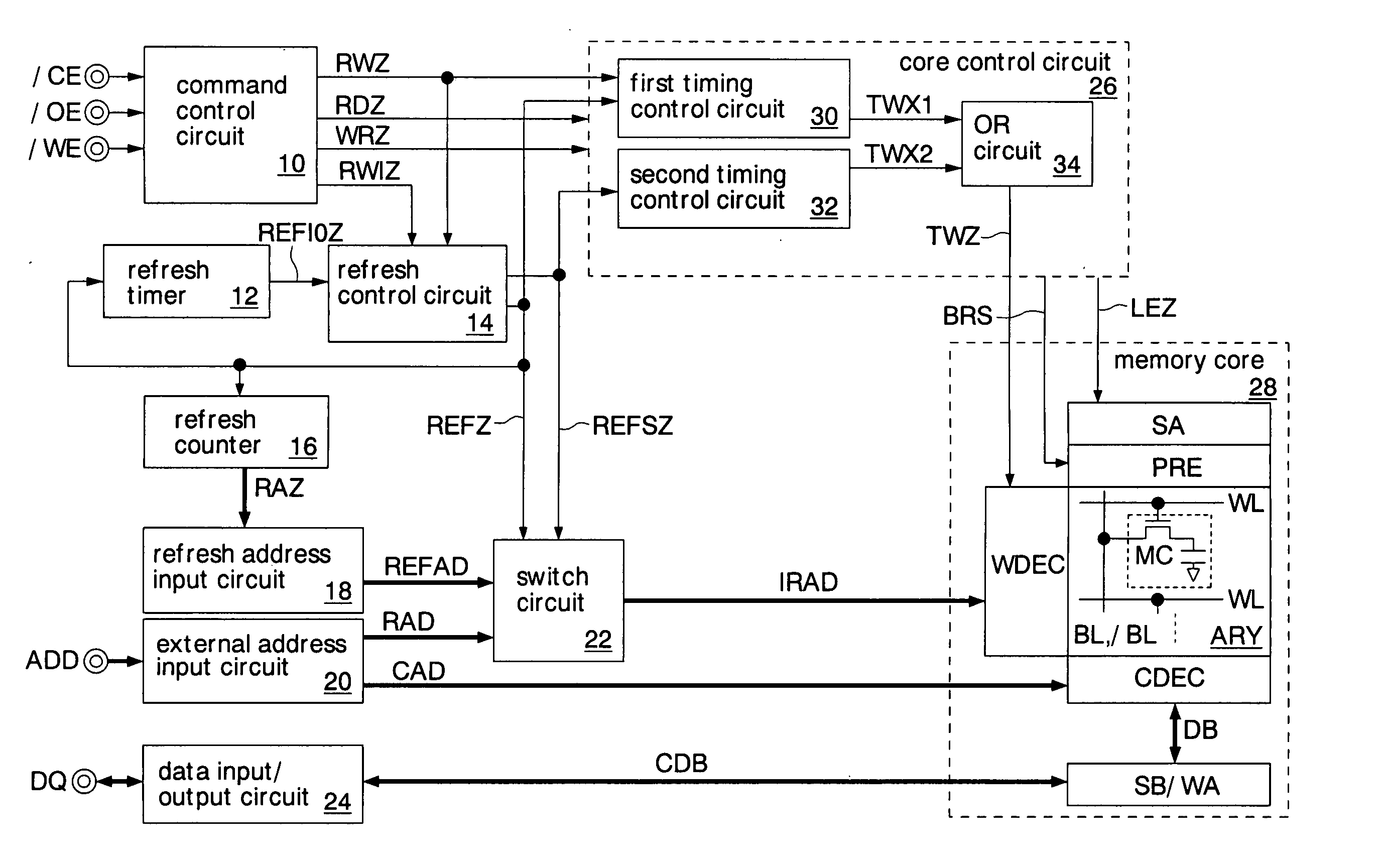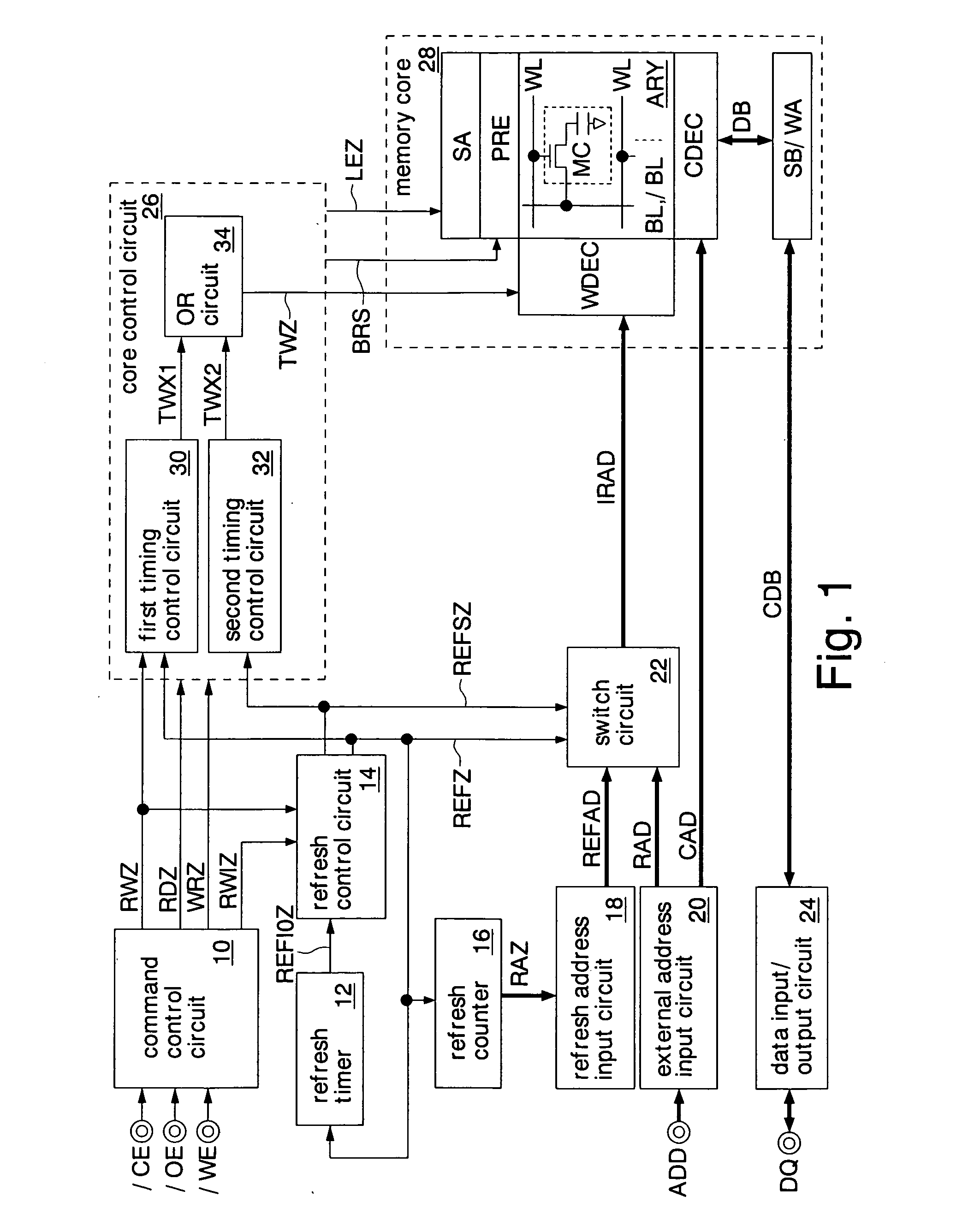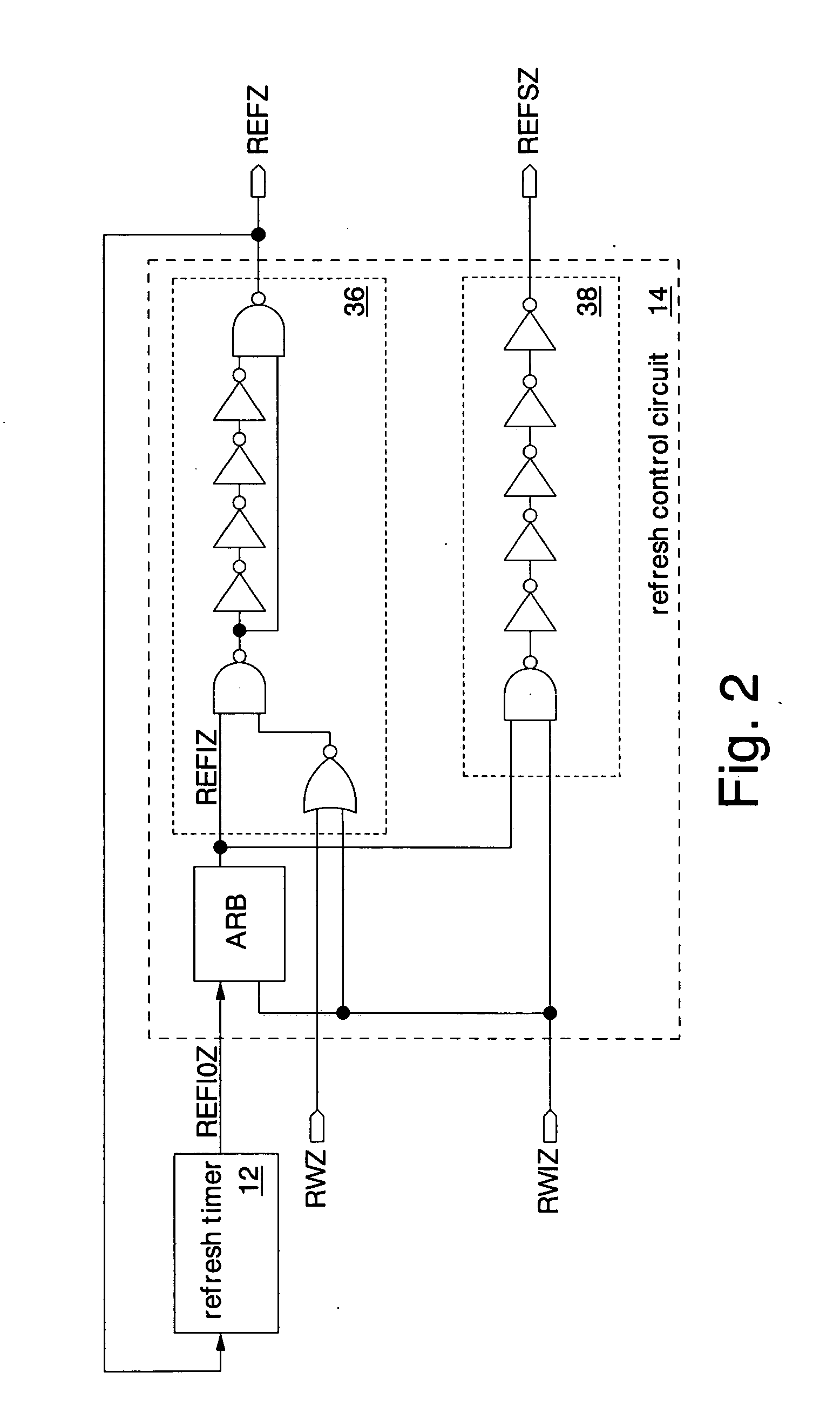Semiconductor memory
a technology of memory and semiconductors, applied in the field of semiconductor memory, can solve the problems of insufficient reduction of access time, data retained in memory cells might be corrupted, and disadvantages of higher capacities, and achieve the effect of reducing power consumption and reducing power consumption of semiconductor memory
- Summary
- Abstract
- Description
- Claims
- Application Information
AI Technical Summary
Benefits of technology
Problems solved by technology
Method used
Image
Examples
first embodiment
[0092]FIG. 1 shows the semiconductor memory of the present invention. This semiconductor memory is formed as a pseudo SRAM which has DRAM memory cells and an SRAM interface. The pseudo SRAM performs periodic refresh operations inside the chip without receiving refresh commands from exterior, thereby retaining data written in its memory cells. This pseudo SRAM is used, for example, as a work memory to be mounted on a cellular phone.
[0093] The pseudo SRAM has a command control circuit 10, a refresh timer 12, a refresh control circuit 14, a refresh counter 16, a refresh address input circuit 18, an external address input circuit 20, a switch circuit 22, a data input / output circuit 24, a core control circuit 26, and a memory core 28.
[0094] The command control circuit 10 receives command signals (a chip enable signal / CE, an output enable signal / OE, and a write enable signal / WE) from exterior through command terminals, decodes the received commands, and outputs a read control signal R...
second embodiment
[0167]FIG. 12 shows another operation of the pseudo SRAM according to the Detailed description will be omitted of the same operations as in FIGS. 6, 7, and 11 seen above.
[0168] In this example, two read operations RD are performed in succession, and the refresh request signal REFI0Z occurs after the supply of the first read command. The operations are the same as in the first embodiment (FIG. 7) except that the real refresh operation REFr is performed between the read operations RD.
[0169] As above, the second embodiment can provide the same effects as those of the first embodiment described above. Moreover, in this embodiment, the execution time of the normal refresh operation REF is shorter than the execution times of the write operation WR and the read operation RD. This produces a timing margin between the execution of the normal refresh operation and the execution of the next access operation RD or WR. Consequently, the core control circuit 26A and the like can be improved in ...
third embodiment
[0193]FIG. 17 shows another operation of the pseudo SRAM according to the Detailed description will be omitted of the same operations as in FIGS. 6 and 7 seen above.
[0194] In this example, as in the first embodiment (FIG. 7), two read operations RD are performed in succession, and the refresh request signal REFI0Z occurs after the supply of the first read command. Thus, the short refresh operation REF will not be performed. The late occurrence of the refresh request signal REFI0Z also delays the rising edge of the refresh request signal REFIX (FIG. 17(a)). Consequently, the refresh counter 16 counts up after the second read operation RD (FIG. 17(b)). The rest of the operations are the same as in FIG. 16 seen above.
[0195] The third embodiment can provide the same effects as those of the first embodiment described above.
PUM
 Login to View More
Login to View More Abstract
Description
Claims
Application Information
 Login to View More
Login to View More - R&D
- Intellectual Property
- Life Sciences
- Materials
- Tech Scout
- Unparalleled Data Quality
- Higher Quality Content
- 60% Fewer Hallucinations
Browse by: Latest US Patents, China's latest patents, Technical Efficacy Thesaurus, Application Domain, Technology Topic, Popular Technical Reports.
© 2025 PatSnap. All rights reserved.Legal|Privacy policy|Modern Slavery Act Transparency Statement|Sitemap|About US| Contact US: help@patsnap.com



